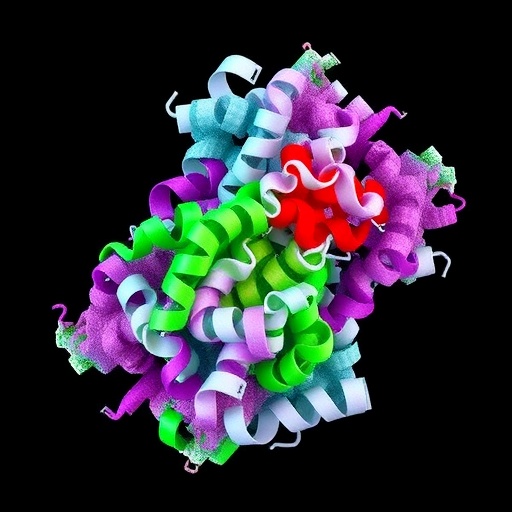
In a groundbreaking article published in Biomedical Engineering Education, researcher David A. Rubenstein offers a compelling insight into the necessity for integrating diversity, equity, and inclusion (DEI) practices into the fabric of biomedical engineering education. As the field of biomedical engineering steadily evolves, it becomes apparent that the curricula must also adapt to meet the demands of a diverse student body, as well as the varied needs of multiple communities that the field serves. Rubenstein’s work not only sheds light on the existing gaps within current educational practices but also provides a practical framework for fostering an inclusive environment that promotes equitable learning opportunities for all students.
The article emphasizes the notion that diversity encompasses much more than gender and ethnicity; it includes a spectrum of differences such as socioeconomic status, cultural background, and even divergent learning styles. By broadening the definition of diversity, Rubenstein advocates for a multifaceted approach that welcomes various perspectives into the educational space. This is vital for a field like biomedical engineering, where innovation thrives on unique viewpoints and collaborative efforts. Creating an inclusive classroom is not merely a moral imperative; it is crucial for preparing future leaders who can address health disparities and drive progress in medical technologies.
Rubenstein’s pragmatic approach to incorporating DEI practices begins with a thorough assessment of the current curriculum. He argues that educators must evaluate which courses effectively represent diverse perspectives and where gaps exist. This critical self-reflection allows for a more comprehensive understanding of how existing educational structures can perpetuate exclusion or marginalization of students from underrepresented backgrounds. By addressing these issues head-on, educational institutions can begin to dismantle barriers that impede inclusivity within the classroom.
Following the evaluation process, Rubenstein presents actionable strategies for incorporating DEI principles into the curriculum. One key method involves embedding diverse case studies and examples into the coursework, which not only enriches the learning experience but also reflects the reality of global health challenges. For instance, incorporating examples from low-resource settings can better prepare students to address real-world problems that physicians and engineers face in diverse socioeconomic contexts. This shift in perspective cultivates a sense of empathy and understanding, an essential trait for future biomedical engineers who will work in diverse environments.
Moreover, Rubenstein highlights the importance of mentorship and role modeling as crucial components of fostering a diverse pipeline in biomedical engineering. Educators are encouraged to actively engage with students from underrepresented backgrounds and provide tailored guidance to help navigate their educational journeys. Mentorship programs can offer students the support they need to excel academically and cultivate confidence in their abilities. This kind of personal investment is vital for student retention and success within the field, ultimately leading to a more diverse workforce in the biomedical engineering sector.
To further institutionalize DEI practices, Rubenstein advocates for the establishment of policies that prioritize diversity within educational institutions. This includes implementing hiring practices that actively seek to recruit faculty from diverse backgrounds, which in turn enriches the academic environment. A diverse teaching staff can introduce a broader range of insights and experiences, enhancing the learning experience for all students. Policymakers also play a crucial role in funding DEI initiatives, which can lead to innovative research opportunities that directly benefit marginalized communities.
One of the significant aspects of Rubenstein’s approach is the emphasis on continuous evaluation and improvement of DEI initiatives. Educational institutions must commit to ongoing assessment of their strategies to ensure that they are not merely ticking boxes but rather making substantial progress toward inclusivity. This includes gathering feedback from students and stakeholders to refine and adapt programs that best serve the needs of a diverse population. The dynamic nature of DEI work necessitates flexibility and a willingness to pivot as the educational landscape shifts.
Furthermore, the article calls attention to the pivotal role that community engagement plays in fostering a more inclusive biomedical engineering education. By collaborating with local organizations and communities, educational institutions can better understand the specific health needs and challenges faced by diverse groups. This connection not only enriches student learning but also fosters a sense of responsibility and commitment to addressing health disparities. Students gain firsthand experience and insight into the societal impact of biomedical engineering innovations, which can be transformative as they advance in their careers.
As biomedical engineering continues to intersect with issues of social justice, it is crucial for educators to prepare students to not only innovate but also advocate for equitable healthcare solutions. Rubenstein’s incorporation of DEI practices into the curriculum empowers students to engage with broader ethical questions surrounding healthcare access and quality. By cultivating critical thinking and awareness of social determinants of health, educators can empower the next generation of biomedical engineers to become agents of change.
Rubenstein also discusses the potential hurdles and challenges that may arise when implementing DEI practices in educational settings. Resistance to change can manifest in various forms, from skepticism about the necessity of DEI initiatives to logistical challenges in curriculum design. However, addressing these barriers is paramount to the overall success of fostering inclusivity. Conversations surrounding diversity must be approached with sensitivity and an understanding of the complexities involved, ensuring that all voices are heard and valued in the dialogue.
In essence, the implementation of DEI practices within biomedical engineering education is not merely a trend but a vital evolution of the discipline itself. As the article points out, it is the responsibility of educators and institutions to ensure that the field grows to reflect the diverse society it aims to serve. Ultimately, a more inclusive educational environment will foster innovation by drawing from a wider array of perspectives, ultimately benefiting patients and communities worldwide.
The road to an equitable biomedical engineering education is a challenging yet necessary journey. With the guidance of Rubenstein’s research and framework, institutions can navigate this complex landscape and emerge successfully. The future of biomedical engineering, equipped with the tools of diversity, equity, and inclusion, promises to be brighter, more innovative, and ultimately, more beneficial to all communities.
In conclusion, Rubenstein’s article serves as a vital reminder that the push for diversity, equity, and inclusion is a collective effort that requires dedication, passion, and proactive strategies. As educational institutions embrace these principles, they can create a generation of biomedical engineers who not only possess technical expertise but also prioritize social responsibility. The intersection of technology and humanity within this field will forge a path that promotes health equity and serves as a catalyst for meaningful change in society.
Subject of Research: Incorporating Diversity, Equity, and Inclusion Practices into Biomedical Engineering Education
Article Title: A Practical Approach to Incorporating Diversity, Equity, and Inclusion Practices into Biomedical Engineering Undergraduate Courses
Article References:
Rubenstein, D.A. A Practical Approach to Incorporating Diversity, Equity, and Inclusion Practices into Biomedical Engineering Undergraduate Courses.
Biomed Eng Education 4, 429–432 (2024). https://doi.org/10.1007/s43683-024-00149-3
Image Credits: AI Generated
DOI: https://doi.org/10.1007/s43683-024-00149-3
Keywords: Diversity, Equity, Inclusion, Biomedical Engineering, Education, Curriculum, Mentorship
Tags: addressing health disparities through educationchallenges in engineering educationcollaborative efforts in biomedical engineering advancementculturally responsive teaching in engineeringdiverse student body in engineeringdiversity in biomedical engineering educationequity in STEM educationfostering innovation through diverse perspectivesframeworks for inclusive learning environmentsinclusion practices in engineering curriculapromoting equity in biomedical engineeringsocioeconomic factors in engineering education




